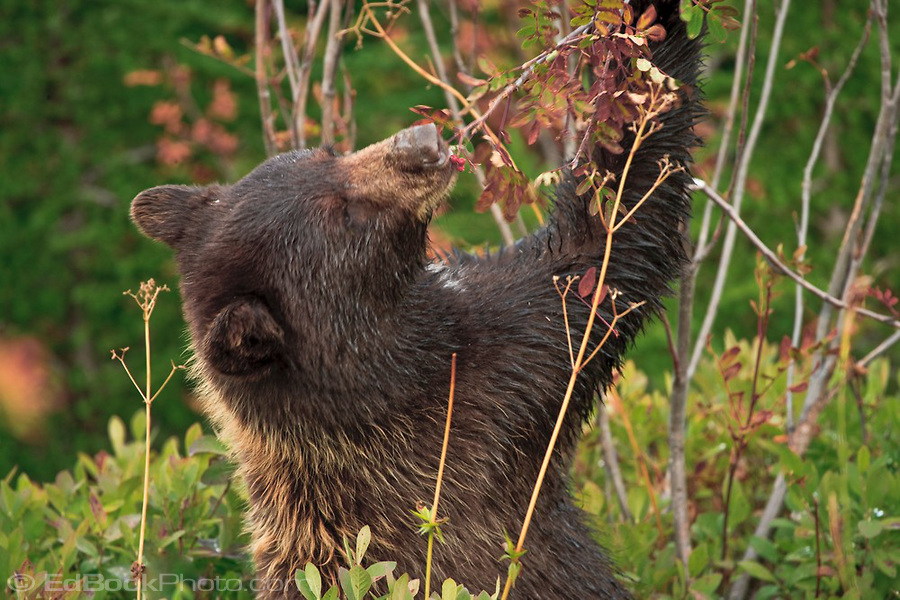Interactions
The American Mountain Ash berries are a major food
source for many wildlife animals and birds in the winter especially. Some of these wildlife animals include squirrels,
rabbits, bears, moose and white-tailed deer. (American
Mountain Ash, 2006.) Many trees,
including the American Mountain Ash, produce periodic crops of
berries that mediate predation between predators and their small
mammal prey. Many studies have shown a correlation between
increased amounts of berries with an increased amount of small
mammal abundance. (Jensen, 2012.) Not only do the berries
provide food, but the American Mountain Ash tree provides
protection and cover for birds and small animals. It allows
them to nest and hide from certain predators. (American
Mountain Ash- Sorbus americana, 2012.)
especially. Some of these wildlife animals include squirrels,
rabbits, bears, moose and white-tailed deer. (American
Mountain Ash, 2006.) Many trees,
including the American Mountain Ash, produce periodic crops of
berries that mediate predation between predators and their small
mammal prey. Many studies have shown a correlation between
increased amounts of berries with an increased amount of small
mammal abundance. (Jensen, 2012.) Not only do the berries
provide food, but the American Mountain Ash tree provides
protection and cover for birds and small animals. It allows
them to nest and hide from certain predators. (American
Mountain Ash- Sorbus americana, 2012.)
In a recent paper, it stated that boreal forests are the largest
habitat occupied by black bears. However, this provides challenging
conditions for the black bear species, due to its low productivity. (Mosnier,
2008.) It was questioned what the bears ate during the different seasons,
when they lived in the boreal forests. In order to find out what they
consumed, diet analysis was conducted, along with the surveying of plant
phylogeny and vegetation inventories to study adaptations of black bears to
boreal forests. In July of 2002, 24 black bears were radio collared (15
males and 9 females). These radio collars were programmed to document the
location of the black bear every hour to four hours. In the study however,
due to collar malfunctions, they only used data from 16 of the bears. In
the winter, when the bears would be hibernating, they would recover the data
from the collar on each black bear. In order to analyze the data easily,
they grouped the land into ten cover types based on the tree stand
composition, age and structure. The physical attributes
 of the plants were
documented every two weeks on each separate land section. Black bear waste
was also collected to be analyzed. Every two weeks, from June to September
each year, initial removal of all visible waste was conducted. Only fresh
waste however, was analyzed. By analyzing this waste, you could follow the
diet composition of the black bears. The results from the studies showed
that most species of plants flowered and produced fruits on the same dates
in both 2003 and 2004. The black bear waste analysis, based on 96 samples
of waste, showed three distinct periods of the black bear diet. The first
was spring, which revealed that grass-like plants, or graminoids,
represented the greatest portion of the black bear diet. The second most
important item in the black bear diet, were moose calves. In the summer,
the greatest portion of their diet was a wide diversity of fruits. In the
fall, 65% of the diet was the berries of American Mountain Ash, as can be
viewed in the graph of
figure 2. Blueberries
and graminoids were also consumed, along with beaver, but in lower amounts
then the American Mountain Ash berries. Quite obviously, the results showed
that the black bear diet was closely linked to the availability of different
plants, especially the American Mountain Ash. (Mosnier, 2008)
of the plants were
documented every two weeks on each separate land section. Black bear waste
was also collected to be analyzed. Every two weeks, from June to September
each year, initial removal of all visible waste was conducted. Only fresh
waste however, was analyzed. By analyzing this waste, you could follow the
diet composition of the black bears. The results from the studies showed
that most species of plants flowered and produced fruits on the same dates
in both 2003 and 2004. The black bear waste analysis, based on 96 samples
of waste, showed three distinct periods of the black bear diet. The first
was spring, which revealed that grass-like plants, or graminoids,
represented the greatest portion of the black bear diet. The second most
important item in the black bear diet, were moose calves. In the summer,
the greatest portion of their diet was a wide diversity of fruits. In the
fall, 65% of the diet was the berries of American Mountain Ash, as can be
viewed in the graph of
figure 2. Blueberries
and graminoids were also consumed, along with beaver, but in lower amounts
then the American Mountain Ash berries. Quite obviously, the results showed
that the black bear diet was closely linked to the availability of different
plants, especially the American Mountain Ash. (Mosnier, 2008)
<< Back to INSECTS AND DISEASE Continue on to FALL FUN >>
Back to HOME